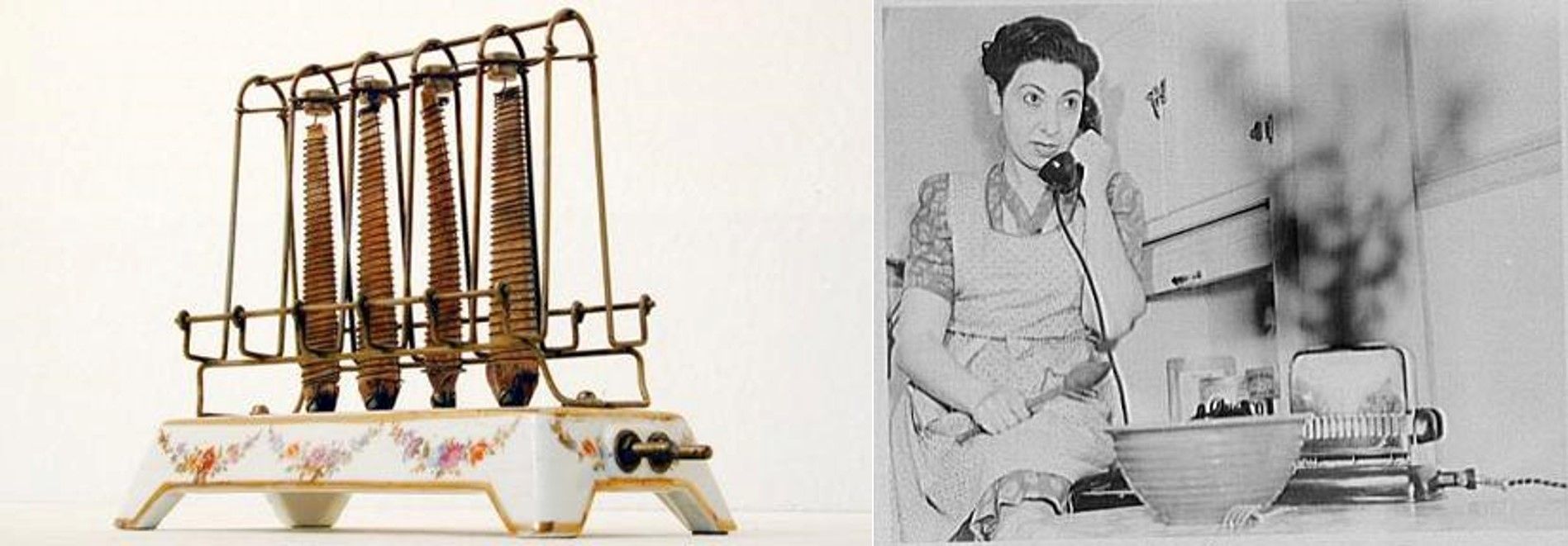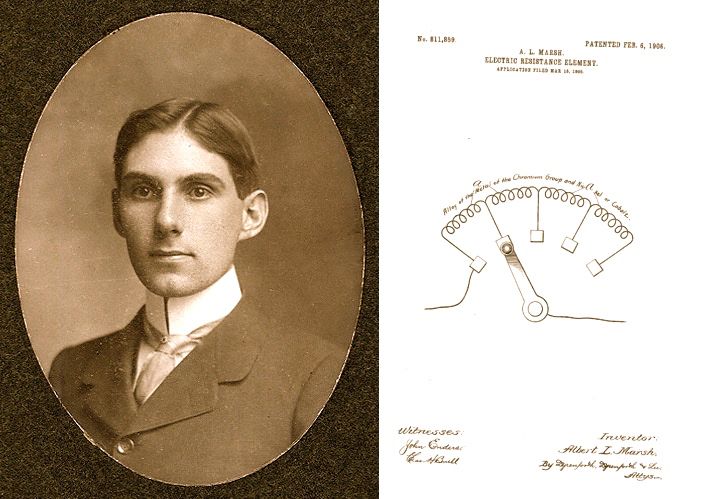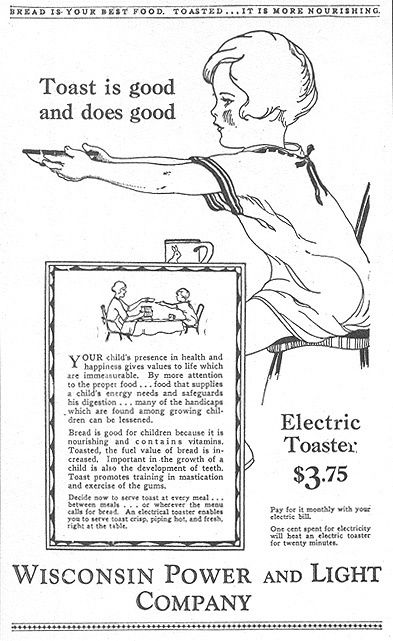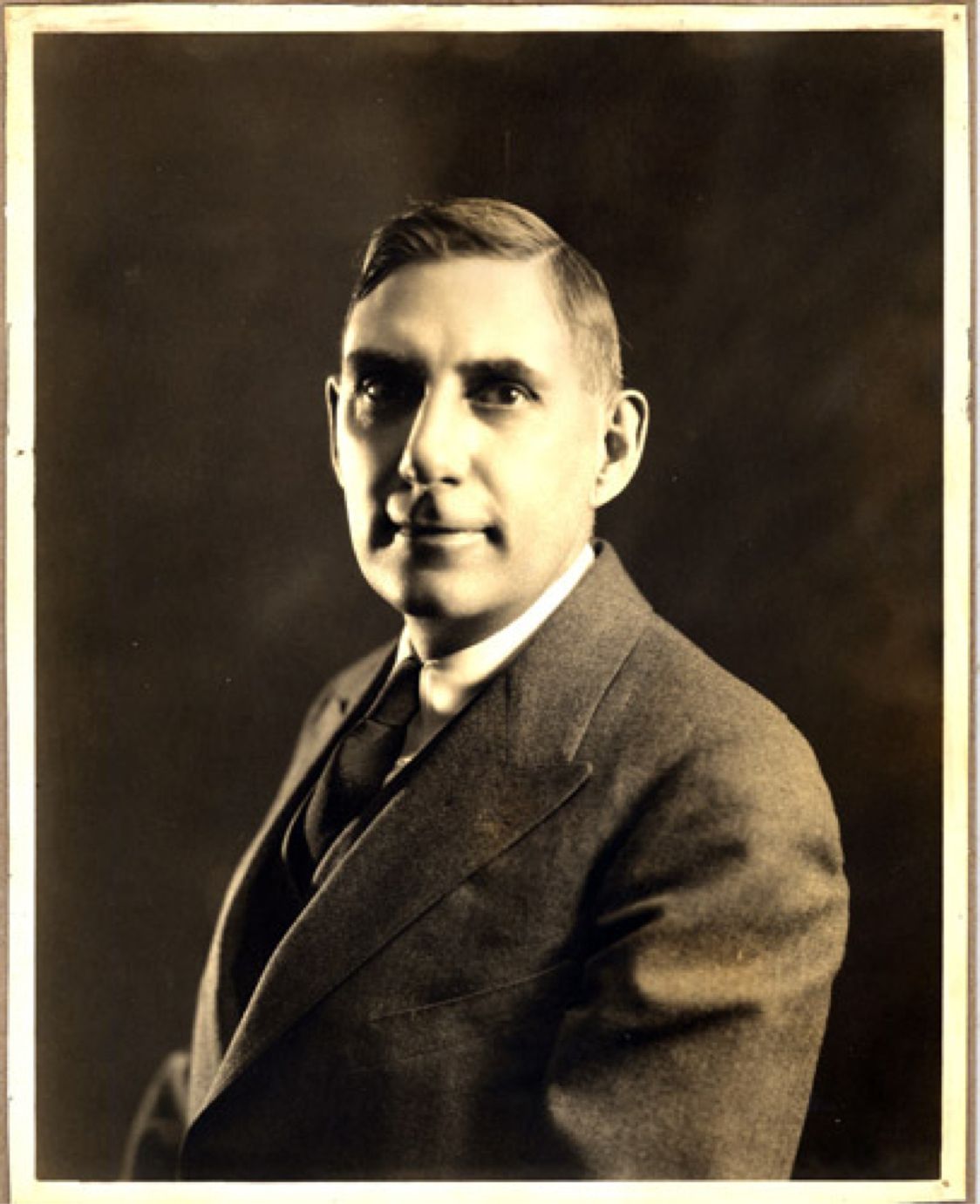




Albert L. Marsh was granted a patent in 1906 for a new alloy that combined nickel and chromium. The new material, called “Nichrome” glowed cherry-red when heated with an electric current. It was revolutionary because it could be heated and cooled many times without breaking. Unlike a light bulb filament, it did not need to be enclosed in a vacuum.
Marsh’s discovery made the electric toaster possible. Nichrome wire was pliable and could be produced inexpensively. Within a few years of Marsh’s patent, several companies, like General Electric, were producing electric toasters.
By the 1920s, the morning toast, made in an electric toaster, became a staple for the growing middle class. The benefits of toast were promoted by electrical companies which, of course, benefited from the increase in electrical service.
Marsh formed the Hoskins Manufacturing Company to develop the new material. It was marketed under several names, including “Chromel.”
In 1941, Albert Marsh was awarded the Albert Sauveur Achievement Award, which recognizes pioneering materials science and engineering achievements. Albert Marsh and his wife, Minnie, lived on North Avenue in Lake Bluff.
